Researchers from MSU Cultivate and Develop Commercial Products from Watermeal that Meet Quality Standards and Encourage Environmental Friendliness
Many people might already be familiar with watermeal, and there are others who are not yet aware of what watermeal looks like, whether it is edible, and what benefits it provides. Today, researchers from Mahasarakham University (MSU) have employed technology to enhance the efficiency of watermeal cultivation, aiming to produce high-quality watermeal. They found that the quality of cultivated watermeal contains higher protein than soybeans when compared in the same cultivation area. Additionally, it contains all the essential amino acids, vitamins, high fiber, and is rich in many other necessary nutrients, and beneficial for the digestive system. Watermeal is also low in calories, starch, sugar, and fat, making it suitable for those who want to control their weight.
Moreover, watermeal is one of the aquatic plants in the new strategic policy drive of the Ministry of Agriculture and Cooperatives in the future food sector. It is a rising mega trend widely discussed, with significant interest from the food industry. It represents a future food product with intriguing potential, indicative of a promising future for farmers and the food industry. Watermeal is, therefore, a type of plant that the research team at the Faculty of Technology, MSU, led by Asst.Prof. Supachai Sutticharoen, Deputy Dean for Resource Management and Student Quality Development, is continuing to study and develop further.
Project Title: Cultivation and Development of Commercial-Quality and Environmentally Friendly Products from Watermeal
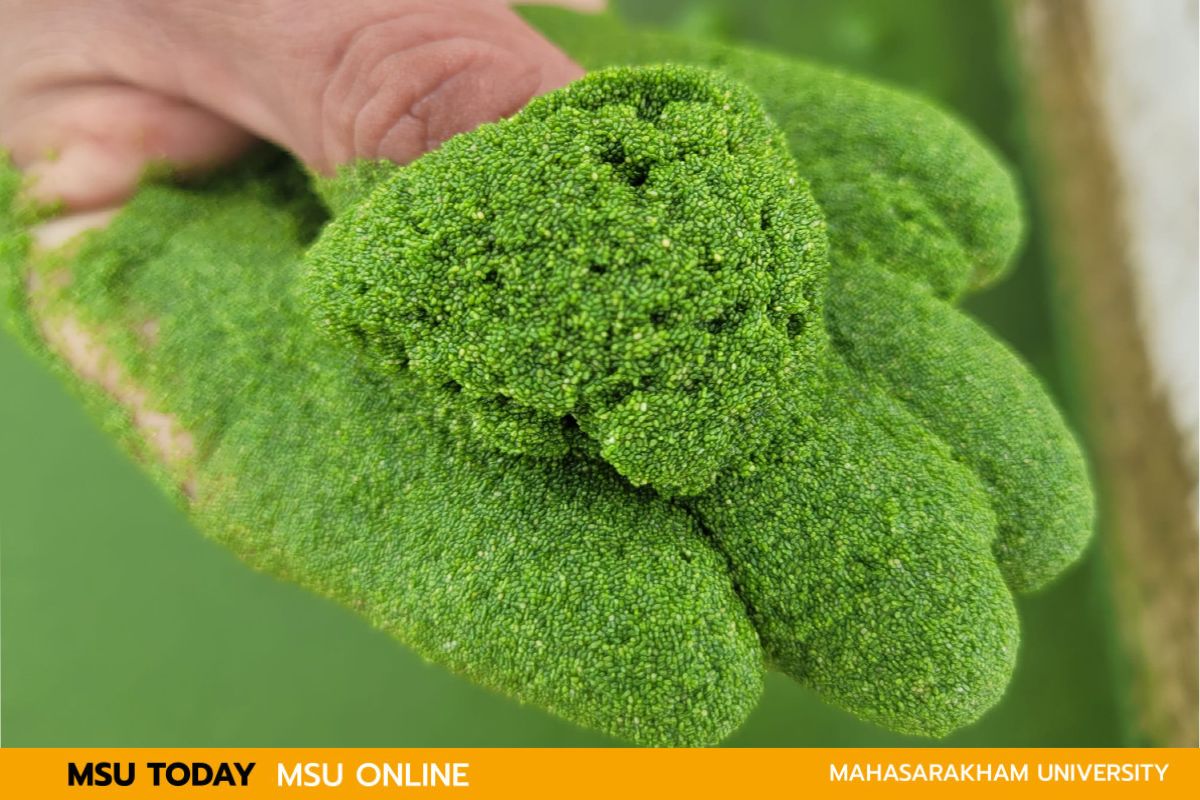
Origins of Commercial Watermeal Cultivation
Watermeal is a green aquatic plant with small round grains resembling fish eggs, measuring about 0.5-1.5 millimeters in diameter depending on the species. It spreads over the water surface in mats and is usually found in stagnant water sources such as ponds and natural swamps. It is a flowering plant, without roots or leaves, that thrives in natural water sources without flowing water. Harvesting watermeal requires a scoop to gather it, then thorough washing before cooking. It has long been used by locals in traditional dishes such as curries, stir-fries, or as an ingredient to enhance flavor.
However, currently there are concerns about the source and cleanliness of watermeal, particularly concerning microbial contamination that can cause gastrointestinal diseases. harvesting watermeal from natural sources presents various challenges, particularly in controlling the yield, quality, and nutritional value.
Therefore, closed-system watermeal cultivation is of interest to high-quality produce. Research reports show that watermeal contains all essential and non-essential amino acids, with lysine, phenylalanine, and leucine being the most prevalent and are beneficial for the immune and nervous systems. Furthermore, analysis of the fatty acids in dried watermeal reveals that it contains twice as much unsaturated fatty acids as saturated fatty acids and also includes high levels of essential fatty acids like omega-3 and omega-6. This makes it a significant upgrade from traditional local foods to a future food, positioning watermeal as an excellent alternative protein source.
Why Choose Watermeal Cultivation for Commercial Purposes?
Watermeal is one of the aquatic plants in a new strategic policy drive of the Ministry of Agriculture and Cooperatives in the future food sector. As a future food product with intriguing numbers, it suggests a promising future for farmers and the food industry. Research concludes that Thailand’s export value of future food in 2021 was 115,490 million baht, a 7% increase from the previous year, accounting for 10% of total food exports. Furthermore, watermeal serves as an excellent plant-based protein, aligning very well with growing the demand for alternatives to meat.
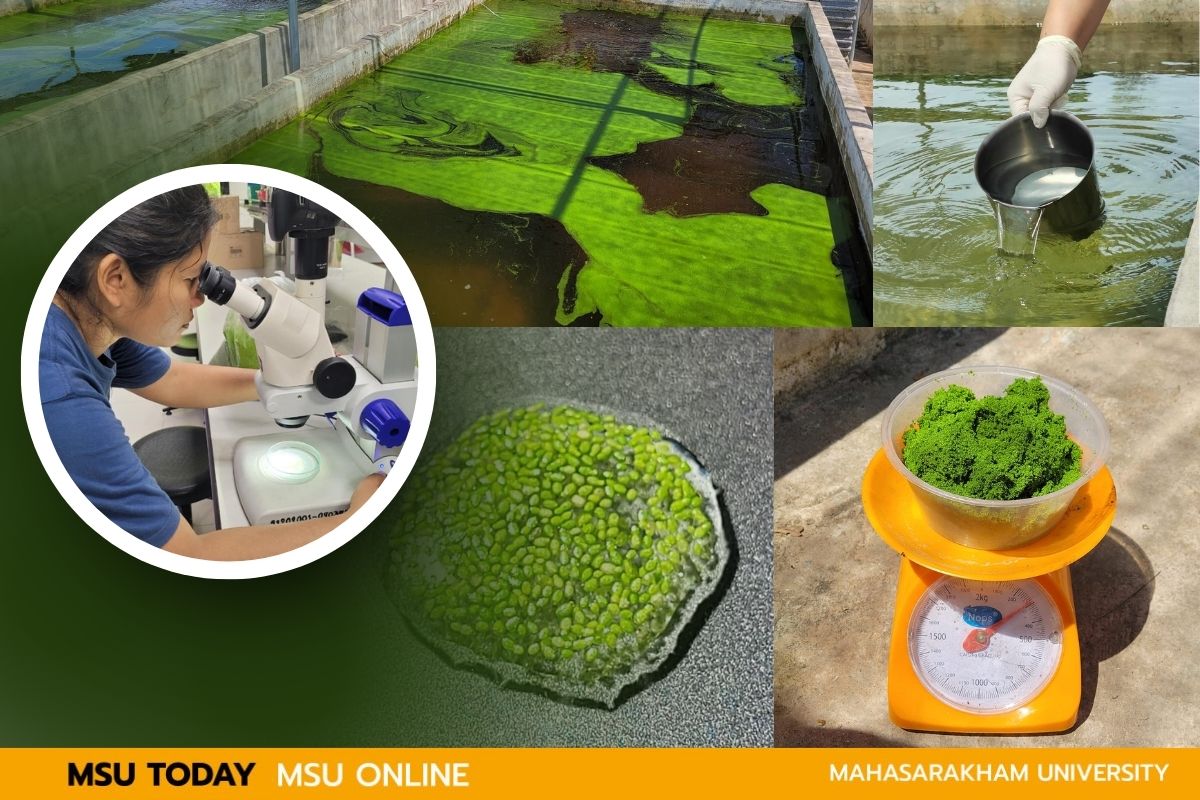
Types of Watermeal
General Information and Classification of Watermeal:
- Thai Name: ไข่ผำ (Khai Pham)
- Common Name: Wolffia, Watermeal
- Scientific Name: Wolffia arrhiza (L.) Wimm
Currently, 16 species of watermeal are identified, including W. angusta, W. arrhiza, W. borealis, W. brasiliensis, W. Columbiana, W. denticulate, W. gladiata, W. globosa, W. hyaline, W. lingulata, W. microscopica, W. netropica, W. oblonga, W. reanda, W. roanda, and W. welwitschii. In Thailand, two species are present: Wolffia arrhiza (L.) Wimm and Wolffia globosa (L.) Wimm, with regional names such as Pham, Khai Pham, and Khai Naen. Research has also found watermeal in European countries, Central Africa, South Africa, Australia, Brazil, and Indonesia.
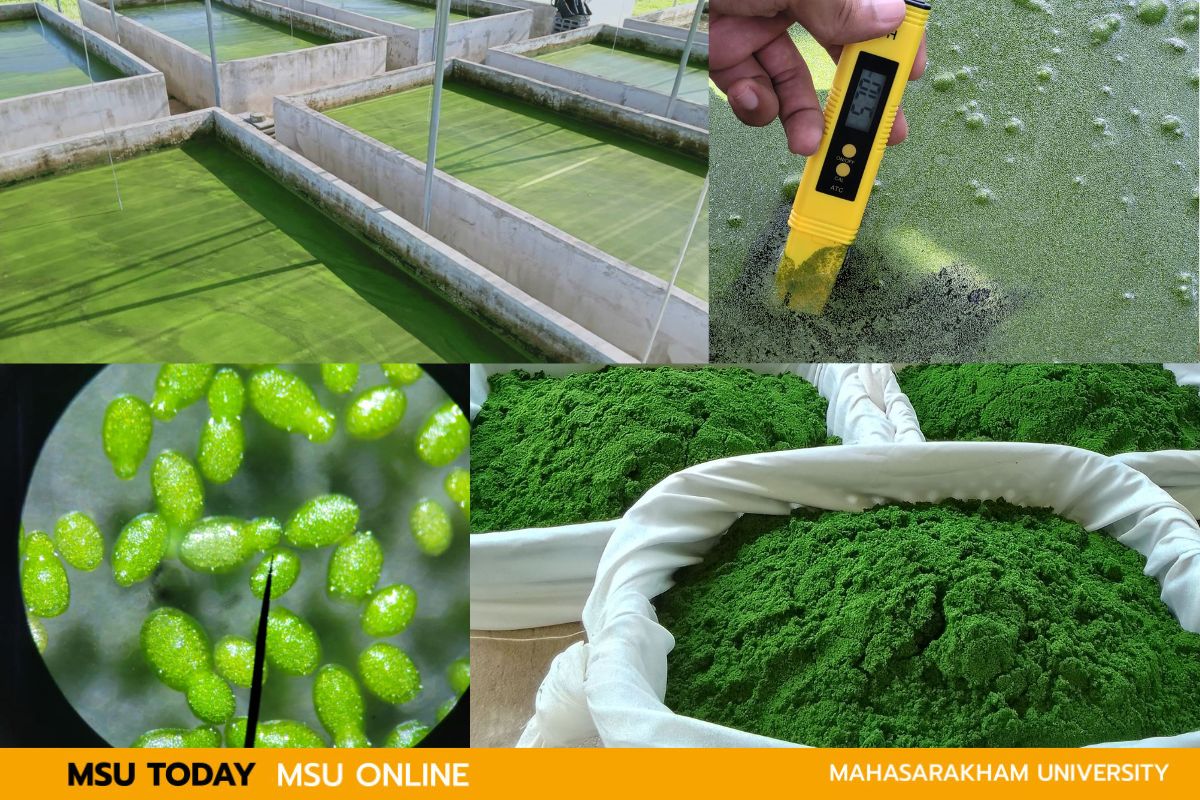
Watermeal Under a Stereomicroscope
The differences between the two watermeal species found in Thailand include:
- W. arrhiza, which is larger, has a dark green upper surface, and its stem is opaque.
- W. globosa, the smallest flowering plant, is smaller than W. arrhiza and has a more cylindrical shape, with a more translucent stem.
Benefits of Watermeal
- High Protein: Provides higher protein yields compared to soybeans in the same cultivation area
- Essential amino acids: Contains all essential amino acids and is rich in other necessary nutrients such as iron, calcium, and zinc, supporting bone health, blood circulation, and immune function
- Eye health: Contains Vitamin A, lutein, and zeaxanthin, which support eye health
- Vitamins and antioxidants: Contains Vitamin B-complex, Vitamin C, Vitamin E, Vitamin K, folate, zeaxanthin, lutein, and other antioxidants. Also contains Vitamin B12, which supports the nervous system and is not typically found in other natural plant products
- Digestion and weight: High in fiber, beneficial for the digestive system, and low in calories, starch, sugar, and fat, making it suitable for weight management
- Environmental benefits: Absorbs carbon dioxide from the air comparable to a dense forest in the same area.
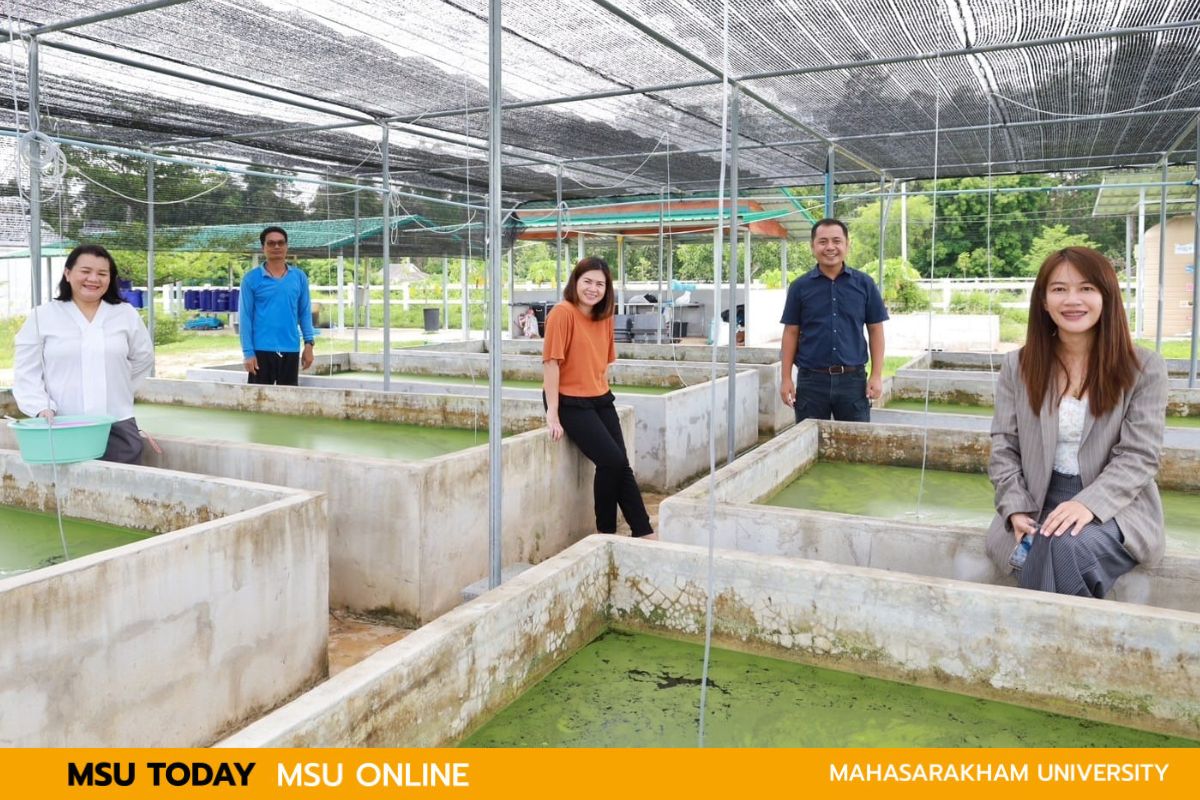
Distinctive Features of Cultivated Watermeal
The watermeal that our research team has cultivated is part of an experiment to find the most suitable cultivation method before transferring the technology to the community. The key features include the development of a farm management system designed to prepare for certification of production standards, in compliance with GAP (Good Agricultural Practices). The team has also developed a nutrient formula for cultivating watermeal without the use of chemical additives, establishing production standards to ensure consumer confidence in safety. This method will also pave the way for the future development of organic farming standards
Differences Between Cultivated and Wild Watermeal
The main difference lies in safety, particularly regarding contamination during the cultivation process, such as the risk of pathogenic microorganisms from natural water sources. Our closed-system cultivation method is designed to control external risk factors, ensuring a safer product.
Target Audience
Farmers, community enterprises, entrepreneurs, or those interested in cultivating watermeal for consumption, commercial purposes, or value-added processing.
How Can We Develop Commercial Cultivation of Freshwater Algae to Meet Quality Standards and Be Environmentally Friendly?
The research team, consisting of researchers from the Faculty of Technology and Faculty of Public Health, MSU, has collaborated to develop watermeal cultivation system in cement ponds. This system controls water quality throughout the cultivation process, from the beginning to the harvesting stage. The team compared traditional cultivation methods, where farmers typically use fermented animal manure as a nutrient source (which poses a risk of contamination by pathogenic microorganisms such as E. coli and coliform) with the cement pond method. In this method, a nutrient formula developed from plant proteins is used, providing essential amino acids and other nutrients that plants can efficiently absorb. This approach avoids the use of chemical additives, promoting the growth and sprouting of algae while enabling it to adapt to fluctuating environmental conditions.

What Dishes Can Freshwater Algae Be Processed Into?
Watermeal can be used to create a variety of Thai dishes, such as Kaeng Kua (spicy curry), Kaeng Om (Isan-style soup), omelets, steamed eggs, salads, and as a dipping sauce. Additionally, watermeal has been further processed into innovative dishes such as spaghetti with freshwater algae, freshwater algae pasta, freshwater algae ice cream, and freshwater algae noodles. There is also ongoing development of ready-to-eat protein jelly from freshwater algae in sachets, and matcha-flavored freshwater algae ice cream.
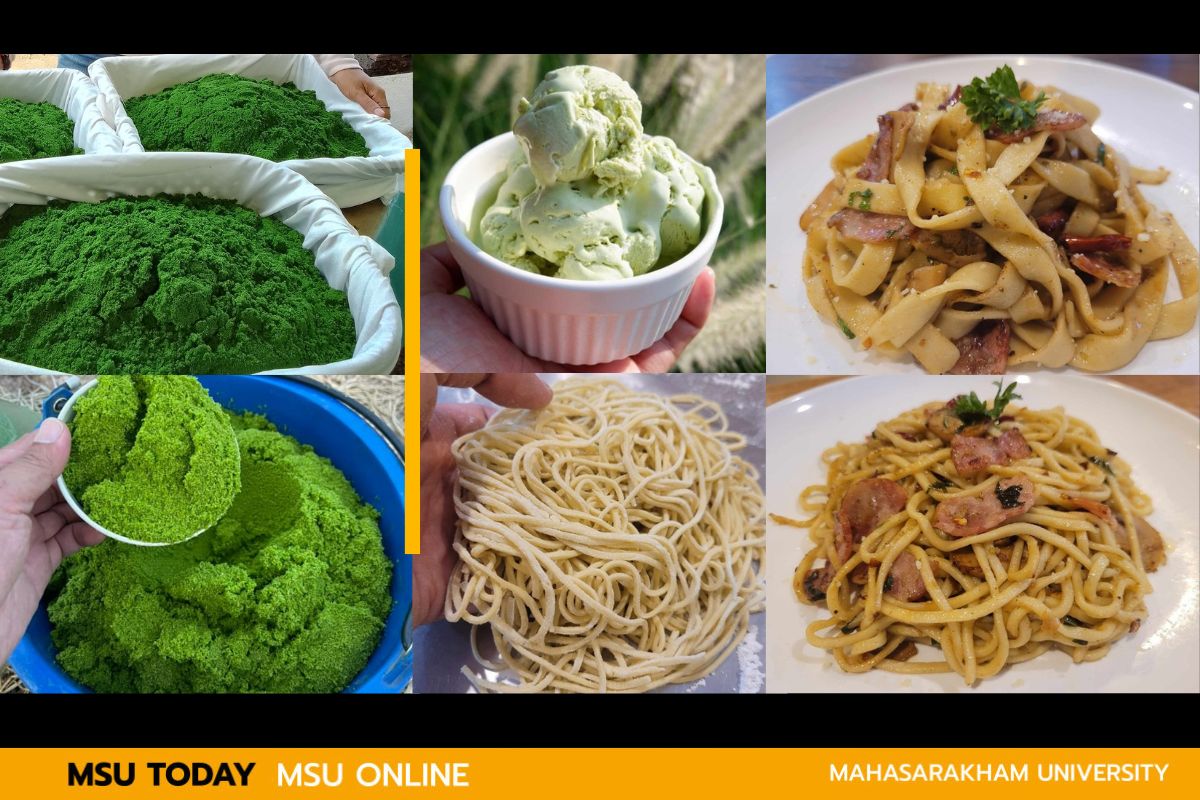
Advice for Interested Farmers
For farmers or anyone interested in cultivating freshwater algae, it is important to thoroughly study the information and consider it scientifically. It’s advisable to start by experimenting with small-scale cultivation to identify any challenges in raising freshwater algae. This experience will allow them to make adjustments and plan effectively if they decide to expand the area for commercial purposes in the future.
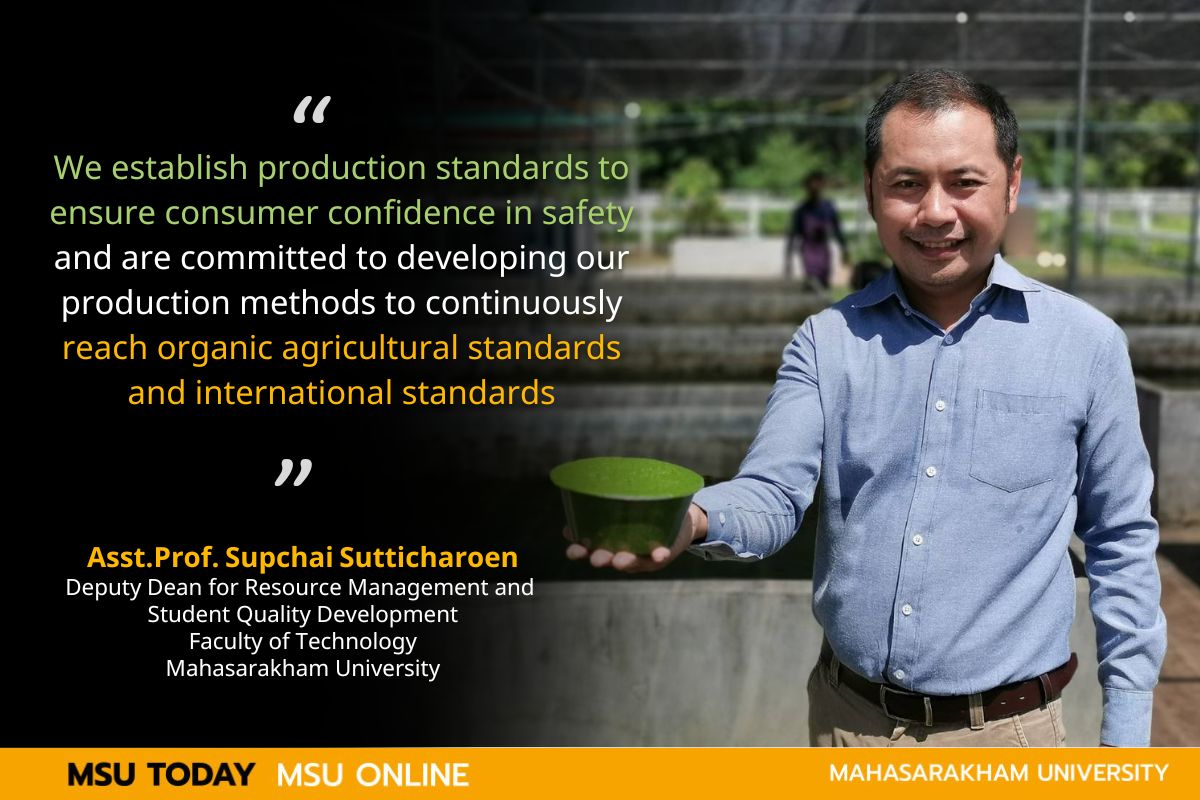
Contact Information for Interested Persons
Asst.Prof. Supachai Sutticharoen,
Deputy Dean for Resource Management and Student Quality Development,
Faculty of Technology,
Mahasarakham University
Phone: 081-3872812
Email: [email protected]
Thai article: https://news.msu.ac.th/msumagaz/smain/readpost.php?mid=573



Leave a Reply